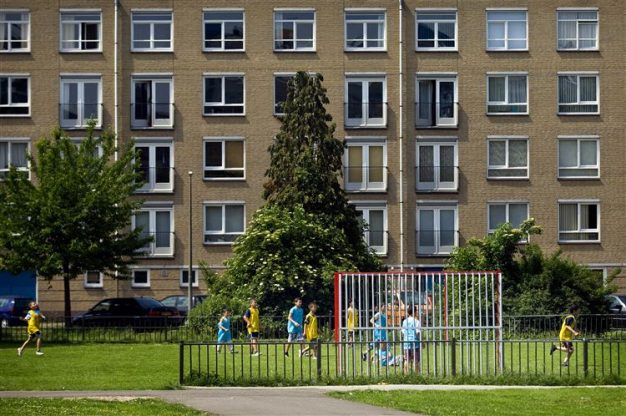
City architects design communities to promote physical activity in children
Improving participation in health-enhancing physical activity for children is a public health issue of concern. Dutch city developers use interactive urban planning tools for developing comprehensive plans and policies for creating a healthy and active city by enhancing physical activity in the urban environment.
A recent study conducted in the Netherlands reveals that children who live in neighbourhoods that promote physical activity are indeed more physically active.
Active living in urban environments
“For the purpose of the study, ten disadvantated neighbourhoods around the Netherlands were selected. The researchers aimed to identify characteristics of the build environment that encourages health-enhancing physical activity (PA). The term “built environment” refers to spaces such as buildings and streets that are deliberately constructed as well as outdoor spaces that are altered in some way by human activity.
“Five neighborhoods were selected for spatial restructuring and five neighborhoods served as controls,” explained Luuk Engbers, a project leader at the Department of Health at the TNO Quality of Life, an independent research organization.
Results indicate that environments that promote more active lifestyles among children and adolescents are important to enable them to achieve recommended levels of physical activity.
“Children in neighborhoods with a high frequency of pedestrian crossings and a high frequency of parallel parking spaces, on average walked and cycled more often than the children in less PA-friendly neighborhoods,” added Engbers.
Towards more physically active neighbourhoods
By 2008, five of the ten neighborhoods had undergone partial restructuring. To examine whether changing the infrastructure lead to more physical activity among children, all measurements were repeated in 2009.
The results were implemented in an interactive, policy support system called Urban Strategy.
“The urban strategy offers an overview of the built environment in which changes can be implemented in an interactive way (e.g., extra residential areas) and the effects on the quality of the surroundings are shown (e.g., traffic, air quality; noise; safety, accessibility of parks and gardens),” explained Sanne de Vries, scientific researcher and project manager at TNO Quality of Life.
Physical activity model
To stimulate the inclusion of health in urban planning, an innovative PA-model was developed, in which three determinants of PA were operationalized:
[1] location of play facilities
[2] service area of play facilities
[3] demographics of children (action radius).
With the visualization of white spots in service areas stakeholders are helped to develop PA-friendly public spaces.
About TNO Quality of Life
TNO Quality of Life, in which TNO Prevention and Care is located, is one of the five core institutes of TNO. TNO Prevention and Care is an (inter)nationally preferred partner for research and consultancy in the areas of youth, physical activity and health, and health care innovation. These areas of expertise are addressed in individual departments. TNO’s department of Health Promotion has a long history in implementation of health promoting interventions.




